About PFAS
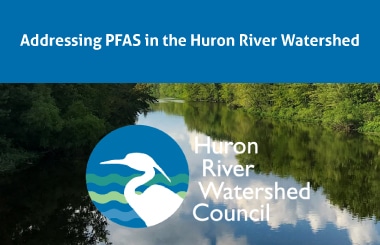
- PFAS are a family of thousands of toxic, synthetic chemicals associated with many health problems.
- PFAS pollution is widespread. PFAS have been found in the Huron River and many watersheds across the country.
- PFAS are commonly used in industrial processes in are many common household products.
- PFAS pollution in drinking water is not regulated by federal law.
- The State of Michigan has established drinking water standards for seven PFAS chemicals. State rules are now in place for cleanups regarding the seven chemicals for which there are drinking water standards.
Key Facts for Residents and Visitors of the Huron River
- All public drinking water in the Huron River watershed is compliant with Michigan drinking water standards, but scientific understanding of the risks of PFAS in drinking water is improving rapidly.
- Private wells have not been tested in most cases. The state has no authority over private residential wells. Concerned residents on private wells should contact their county health departments.
- Do not eat fish from the Huron River or lakes and creeks connected by surface water. HRWC also recommends limiting consumption of wild-caught fish from all inland waterways.
- Canoeing, kayaking, and swimming are okay. There is no evidence that swimming in water contaminated with PFAS at the levels found in the river is a health risk, but repeated ingestion of PFAS following skin contact is a concern.
- Avoid contact with river foam. PFAS concentrates at high levels in foam. If you do make contact with foam, rinse off with non-foamy river water and wash up when you get home.
- Avoid lingering below dams or in places where you commonly encounter a spray of foam and water droplets that may contain elevated levels of PFAS.
PFAS Contamination in Groundwater and Drinking Water in the Huron River Watershed
Since 2018, the Michigan PFAS Action Response Team (MPART) has coordinated PFAS sampling in public drinking water and the identification of PFAS contamination at sites across the state.
MPART and the Michigan Department of Environment, Great Lakes, and Energy (EGLE) maintain a PFAS Geographic Information System that shows active PFAS site investigations and test results. The tools shows all known PFAS sites in the Huron River Watershed. The map is updated regularly.
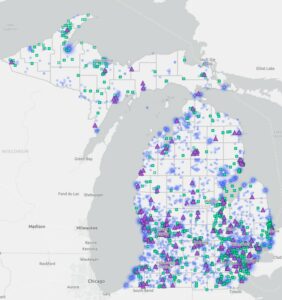
More than 90% of Michigan drinking water supplies tested in Michigan do not contain detectable levels of PFAS, and in the Huron River watershed, the City of Ann Arbor is the only affected municipal drinking water system. The city has been proactive and aggressive in its treatment for PFAS, and has effectively reduced total PFAS contamination to very low levels. No specific PFAS chemical has exceeded the drinking water standards established in August of 2020.
There are other private drinking water systems that provide public drinking water. This category includes churches, gyms, apartment complexes, and schools. Some of these providers have tested positive for PFAS and the State of Michigan is pursuing solutions with each contaminated provider.
The State has no authority to test or regulate drinking water from private wells. Officials are reaching out to residents they believe may be at risk of contaminated groundwater due to their proximity to contaminated sites, and in some cases, state officials will request to test private wells. That process will be continual. HRWC recommends that any resident approached due to risk of contamination have their drinking water tested for PFAS in cooperation with the state. As of August 2020, we are not aware of any location in the watershed where contaminated surface waters are infiltrating nearby wells. The State of Michigan has also provided guidance on residential well water testing here.
Fish Advisory Information
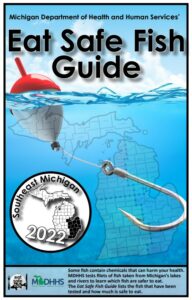
Along most of the Huron River, it’s still not safe to eat fish from the Huron River. Fish tested throughout the Huron may be contaminated with high levels of PFAS. In 2018, the Michigan Department of Health and Human Services (MDHHS) issued a “Do Not Eat Fish” advisory due to PFAS contamination for the Huron River from the N. Wixom Road crossing in Milford to Lake Erie. While the advisory did not specifically apply to tributaries along the Huron River, HRWC is advising that fish should not be eaten from connecting lakes and creeks unless there is a significant barrier to fish. Areas above the Hi-Land Lake Dam on Portage Creek will be safe from the advisory, for example. In 2022, MDHHS relaxed the advisory for the section of the Huron from I-275 to Lake Erie. Read the Eat Safe Fish guidebook here to see what advisories are in place for the lake or stream you intend to fish.
PFAS in Foam
Due to its properties as a surfactant, PFAS readily concentrates in foam at levels much higher than non-foamy water. For this reason, the state recommends people and pets avoid contact with foam. These guidelines emphasize the fact that pets and young children are particularly at risk, since they are more likely to ingest the foam—in the case of animals by licking their fur, and in the case of children by placing their hands in their mouths.
Foam generated by PFAS tends to be bright white with a smooth surface texture that resembles shaving cream. It piles up on shores, blows inland and tends to be tacky or sticky.
Foam naturally occurs on rivers, but it’s difficult to determine if foam is “PFAS foam” or naturally occurring foam. Treat all foam as if it contains high levels of PFAS.
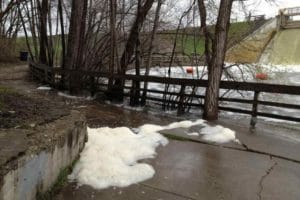
Residents can report suspected PFAS foam by calling the Michigan 24-hour Pollution Emergency Alert System (PEAS) hotline at 800-292-4706 or by filling out a pollution spill form. The state also encourages taking a photo of the foam while being careful to avoid contact. A summary of guidelines is available on HRWC’s website.
Stay Tuned for Updates
This is a rapidly developing issue for the Huron River watershed. There is still a lot we don’t know but we are learning more as ongoing research brings in new information. We will provide updates through emails, blogs, social networking posts, and media interviews.
Michigan residents concerned about PFAS in drinking water should contact the Michigan Environmental Assistance Center with questions, 800-662-9278, M-F, 8am-4:30pm.
We Need to Fix the Problem
PFAS contamination of Michigan’s waterways is widespread, and the chemicals have been used for decades in many common household products. We’ll need strong, systemic solutions from the state and federal government.
In August 2020, Michigan put new drinking water standards (known as Maximum Contaminant Levels or MCLs) into effect for seven specific PFAS chemicals. It was an improvement from the absence of regulatory protections from PFAS exposure before that. But even before the new MCLs were in place, chemical manufacturers and other industries were developing and using replacement chemicals that appear to be just as toxic as those now regulated.
In August 2023, 3M won a lawsuit against Michigan’s drinking water standards, prevailing on a procedural technicality. While the state’s drinking water standards and cleanup criteria are still in place pending appeal, the decision again highlighted severe weaknesses in Michigan’s pollution laws. Corporate polluters frequently exploit such weaknesses, putting profit above the health of people and environment.
In March 2023, the EPA proposed new drinking water standards for six PFAS chemicals. As a part of their assessment, the EPA evaluated the health effects of PFOA and PFOS, two specific PFAS chemicals, and found them to be thousands of times more toxic than previously thought. Specifically, they found even extremely low doses of PFAS compromise the immune system response, increase the risks of various cancers, harm the cardiovascular system, and may cause decreased birth weight. These new science-based findings have significant implications for Michigan’s drinking water standards and the Huron River.
We need state and federal lawmakers to:
- Halt non-essential PFAS use. PFAS use is pervasive, in food packaging, waterproofing, in lubricants, makeup, and even dental floss. In the vast majority of cases, the presence of PFAS is only there to improve convenience or the aesthetics of a product. These types of non-essential uses should be banned.
- Make polluters pay to clean up their own mess, not taxpayers or those drinking contaminated water. The polluter pay laws that were in place before the Governor Engler era should be reinstated, and PFAS chemicals should be included in new polluter pay legislation.
- Establish class-based PFAS protections. Many unregulated PFAS chemicals are known to be toxic and more information is coming to light that indicates the entire class of PFAS are toxic in some way. By banning some chemicals but not others, new toxic chemicals will simply replace the old toxic chemicals in a game of regulatory whack-a-mole until the entire class is regulated.
- Provide timely communication when PFAS site investigations begin and when concerning PFAS levels are detected. Current practices allow the state to notify polluters well in advance of affected residents. This allows polluters to get a head start, to potentially bias the remediation and cleanup process, and seek legal advice before affected residents can do so. Residents should be notified at the same time as polluters when a new investigation begins.
- Strengthen environmental protections from all forms of pollution. In Michigan, we need a strong set of laws that hold polluters accountable through a “Toxics Tax.” We need to explicitly grant the state the authority to reject inadequate permit requests, and we need to provide financial assurance to communities and businesses to clean up orphaned contaminated sites.
For community leaders in the Huron River watershed and beyond:
PFAS is found throughout world. If your community is addressing this contaminant and you are outside of the Huron River watershed, please download our report of recommended practices here. In 2018, when PFAS contamination levels rose sharply in the Huron River, HRWC and many partner groups took action to inform local communities while working with polluters and governing agencies to address it. This report gives an overview of what PFAS is; why is needs to be addressed; how to engage local, affected communities; and how to hold those who are responsible for causing it, as well as those who are responsible for measuring levels and enforcing laws, accountable.
Addressing PFAS in the Huron River: Recommended Practices for Regional Conservation OrganizationsIf you are located in the Huron River watershed and want to get involved please contact us here.
